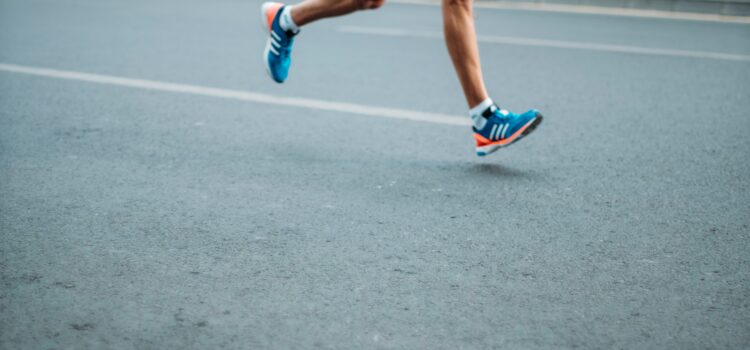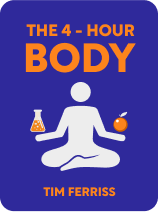

This article is an excerpt from the Shortform book guide to "The 4-Hour Body" by Timothy Ferriss. Shortform has the world's best summaries and analyses of books you should be reading.
Like this article? Sign up for a free trial here .
Are you in training for endurance running? What are the best tips for endurance running from The 4-Hour Body?
In The 4-Hour Body, author Tim Ferriss trained in several sports to improve his body’s performance. Through his endurance running training, he identified some tips for endurance running.
Read on for some tips for endurance running.
Tips for Endurance Running
Running long distances requires different training and technique than sprinting short distances. The author trained with and learned from Brian MacKenzie, who’s well-known for training long-distance runners by having them run short distances for short periods. For example, one of his trainees, “Rookie,” had never run more than four miles. After 11 weeks, he was able to run a 50-kilometer ultramarathon.
There are four tips for endurance running:
Tip #1: Learn Running Technique
The first step to endurance running is learning the Pose method, which was developed by Dr. Nicholas Romanov and is Brian MacKenzie’s preferred technique.
To run in the Pose method, follow these tips for endurance running:
- Get your forward motion from gravity. Don’t push off your feet to move forwards. Instead, lean your weight forward by imagining you’re falling forward from the hips and use your hamstrings to pull your feet off the ground at a 45-degree angle.
- Always keep your legs bent. This will force you to use gravity instead of pushing off.
- Use good foot positioning. As you run, your feet should always be under you, not in front of you, and you should be running on the balls of your feet.
- Take at least 180 steps a minute. This speed forces you to employ the techniques mentioned above and will make use of muscle elasticity. To keep your stride small enough to meet this tempo, you’ll also have to keep your arm movements small. Bend your elbows at 90 degrees and keep your wrists at chest height.
One way to learn this technique is to take photos of yourself running with a high-speed camera that takes 30 frames a second. Ideally, you want to see the following in a single stride:
- Your body is in the air for 5 frames.
- Your body is touching the ground for fewer than 3 frames.
- Your legs should cross for only ¾ of a frame.
While the Pose method has some great benefits, such as improving running speed, making it possible to run on ice, and saving the knees, it has a downside: potential calf and Achilles tendon injuries. Learn the Pose technique gradually, and if you experience pain during any of the steps, skip them.
Brian MacKenzie has some additional tips about running form:
- To avoid sore shins, don’t pull your toes up while running. If you have trouble avoiding this, before you start running, tire out the pulling-up muscle (tibialis anterior) by pressing your toes down with your hands and lifting your toes against them. Do this 30 times for each foot.
- Run quietly. If you’re making a loud stomping sound, you’re probably overusing your hip flexors and quads.
- If you get so tired that your form starts to deteriorate, concentrate on taking lots of steps.
Tip #2: Get in Shape
Every time your feet hit the ground, your tendons, ligaments, and muscles are stretched and contracted, and experience impact. In a 50-kilometer race, your feet might strike the ground between 20,000-25,000 times, and you need to prepare your body for that kind of stress. One of the main tips for endurance running is to think about your whole body.
- For example, when the author first started running, he pulled his hamstring and experienced back pain. This was partly because he had tight quads and hip flexors, which forced his body to bend at the hip. This bent position inhibits the glutes, so the hamstrings have to take over, and they’re less suited because they’re smaller and weaker. Tight hip flexors also pull on the lower back, which causes pain.
Get in shape by doing the following movement exercises:
Exercise #1: Stretch the hip flexors and quads. You can hit both with one stretch: Kneel on one knee, like you’re proposing, in front of a couch. Put the shin of your back leg against the couch. Tense your abs to keep your back straight. You should feel a stretch in the front of your back leg, and the hip of your front leg. Hold each side for 90 seconds.
Exercise #2: Stretch the glutes. There are two stretches and you should do both:
- Stand in front of a table. Put one leg on the table with the knee bent at 90 degrees and lay the outside of your shin flat on the table (similar to the pigeon pose in yoga). Put one hand on your foot and lean forwards for 90 seconds. Then, lean 60 degrees to the left and the right of the knee, and hold each angle for 90 seconds. If your knee hurts, prop it up with pillows or let your ankle hang off the edge of the table.
- Stand in front of the table again and lift one foot onto the surface, keeping the bottom of your foot flat on the tabletop. Now, lean forward and hold for 90 seconds. Then, push your knee to the side with a hand. Lean away from it and hold for 90 seconds.
Exercise #3: Reposition the hips. Get into a crawling position. Put your weight on your hands and one knee, so that the other knee has no weight on it. Hold for 90-120 seconds. Then, put the weightless knee on top of the other ankle and let the foot turn out. Hold for 90-120 seconds.
Exercise #4: Activate your glutes.
- Lie on your back with your knees bent and your feet a foot away from your glutes. Lift your hips into the air, keeping your weight on your heels. Lower. Do ten reps.
- Get in the same position as above but hug one knee into your chest. Push against your hands with your shin and lift your hips (the same way you did when both feet were on the ground). Hold at the top for one second and then lower. Do 15 reps on each side.
- After doing the single-leg version, go back to the double-leg version to confirm that you can lift your hips higher than before.
Exercise #5: Build up ankle and foot strength. Three days a week, jog for half an hour on grass, barefoot, using good running technique.
In addition to doing the exercises, you can see an ART practitioner if you have particularly tight muscles.
Tip #3: Improve Your Aerobic Capacity
Aerobic means that the body is producing energy using oxygen. When using oxygen, the body, among other things:
- Uses fat as an energy source. One pound of fat equals around 4,000 food calories, and even if you have a low body fat percentage, since a single pound is so calorie-dense, you have an almost limitless supply of energy.
- Runs the sodium-potassium pump. This pump helps eliminate muscle soreness and helps muscles recover after a workout.
Anaerobic means the opposite—the body is producing energy without oxygen. When your body runs out of oxygen (you’re moving so fast that it takes too long to get the oxygen you’re breathing to your systems), it:
- Uses glycogen (a carbohydrate) as an energy source. Your body can only store around 1,800-2,200 calories as glycogen, so your energy supply is limited and will quickly run out. You can replenish your glycogen a little by eating, but likely not enough to complete an ultramarathon.
- Shuts down the sodium-potassium pump.
The goal of MacKenzie’s training is to increase your body’s capacity to run aerobically rather than anaerobically. First, we’ll look at the different tips for endurance running in the program. Then, we’ll look at how to schedule them.
The endurance running training program includes:
- Interval training. Interval training is alternating periods of intense exercise and short rests. In this program, the interval training involves running 1,600 meters divided up into 8 sets of 200m, 4 sets of 400m, or 2 sets of 800m. For 8 or 4 sets, there’s a 90 second rest period. For the 2 sets, there’s a 2-3 minute rest period.
- CrossFit. CrossFit includes exercises designed to condition the metabolic system. CrossFit exercises are usually done for 2-10 minutes. You can find CrossFit exercises and routines here.
- Time trials. Time trials measure how fast you can run certain distances so you can measure your progress over time. It’s normal for these to get slower in your first three weeks of training. After that, you’ll see improvement.
- Refueling. You need to learn how to eat while running because ultramarathons take so much time and energy. Every 20-30 minutes of running, eat half a gram of carbohydrate per kilogram of body weight while gulping water. For example, if you weigh 60 kg, eat 30 grams of carbohydrate per half hour. Additionally, consider taking GENr8 Vitargo S2 after a workout. This will help you refuel on glycogen.
There are two options for scheduling training sessions:
- Do intervals on Monday and Thursday mornings, CrossFit in the afternoons Monday to Friday, and the time trial on Sunday afternoons. On Mondays and Thursdays, when you’re training twice a day, make sure you have at least three hours’ rest between sessions.
- On an 11-day repeating schedule, do intervals in the mornings on days 2, 7, and 10. Do CrossFit in the afternoons on days 1-3, 5-7, and 9-11. Do time trials in the afternoons on days 4 and 8.
If you ever hit a point where you’ve been resting for three minutes (in the first four weeks) or two minutes (following weeks) and your heart rate is above 120, end the workout.
A weak runner will need to follow this program for six to eight weeks.
Tip #4: Taper Training Before a Race
In the week before your race, you’ll taper (reduce) your training time. For example, if your race is on a Saturday, you might:
- Skip your time trial on the preceding Sunday and do a 45-60-minute easy run instead.
- Do your intervals at a slower pace.
- Only do one CrossFit workout, and rest both Wednesday and Friday.

———End of Preview———
Like what you just read? Read the rest of the world's best book summary and analysis of Timothy Ferriss's "The 4-Hour Body" at Shortform .
Here's what you'll find in our full The 4-Hour Body summary :
- How to do the least amount you need to do for the results you want
- Why you need a cheat day in your diet
- How to improve everything about your body, including sleep, sex, and longevity







You are so right about keeping the legs bent, it worked great when we tried!